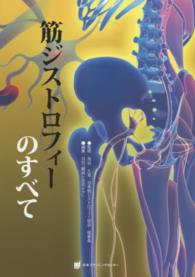- ホーム
- > 洋書
- > ドイツ書
- > Social Sciences, Jurisprudence & Economy
- > Education Science / Pedagogic
- > didactics, methodics, school education
Full Description
This open access book presents insights into the current state of reading literacy in the Dinaric region, namely the education systems in Albania, Croatia, Kosovo[1], Montenegro, North Macedonia, Serbia, and Slovenia. A collection of analyses reveals factors influencing this key capacity of young pupils. Using data from IEA's Progress in International Reading Literacy Study (PIRLS) 2021, the book explores teaching and learning reading literacy at the end of primary school (Grade 4) through multiple lenses, such as national reading curricula and textbooks, home and school resources for learning, student wellbeing, teacher education, instructions, and digital assessments. Since the administration of PIRLS 2021 coincided with the Covid-19 pandemic, the book also provides valuable insights into remote teaching and learning and other disruptions caused by the pandemic.
This volume builds on the regional research presented in IEA Research for Education Volume 13, Dinaric Perspectives on TIMSS 2019, which explored the teaching and learning of mathematics and science in primary schools across the Dinaric region. Aimed at policymakers, researchers, and practitioners, Dinaric Perspectives on PIRLS 2021 offers multidimensional perspectives on student achievement in reading literacy in a region that is underrepresented in the English-speaking research literature on educational assessments and student performance.
[1] This designation is without prejudice to positions on status and is in line with UNSCR 1244/1999 and the ICJ Opinion on the Kosovo declaration of independence.
Contents
Foreword.- Acknowledgements.- 1 Assessing Reading Achievement in the Dinaric Region—An Introduction: Surette van Staden, Paulína Koršňáková, and Jan-Philipp Wagner.- 2 National Curriculum on Language as a Basis for Teaching and Students' Achievement in Reading Comprehension: Biljana Mihajlovska, Surette van Staden, Danijela Đjukić, Elizabeta Karalić and Branislav Randjelović.- 3 Comparing Texts Used in PIRLS With Mother Tongue Textbooks in the Dinaric Region: Are Students Well Prepared To Take The Test?: Biljana Mihajlovska, Surette Van Staden, Danijela Đjukić, and Tanja Andonova Mitrevska.- 4 Teacher Qualifications, Professional Development, Teaching Quality, and Student Reading Achievements. A Comparative Perspective for the Dinaric Region: Trude Nilsen, Agim Alia, and Wangqiong Ye.- 5 Personal and Contextual Well-Being Factors Relating to Students' Reading Achievement in the Dinaric Region: Kajsa Hansen Yang and Gordana Čaprić.- 6 Relevance of Home Situation for Students' Reading Achievement: Christian Christrup Kjeldsen and Ines (Elezović) Perović.- 7 Digital Skills and Tools Supporting Distance Learning: A Comprehensive Response of Dinaric Education Systems in Times of Educational Disruption: Marina Radović, Dijana Vučković, and Jelena Radišić.- 8 Data Collection During a Pandemic. How did COVID-19 Impact the Sample Composition in PIRLS 2021?:John Jerrim and Duygu Savaşcı-Smith.- 9 An Analysis of PIRLS 2021 Mode Effects: Differences in Reading Achievement Related to the Assessment Mode for PIRLS 2021 in Croatia and Slovenia: Eva Klemenčič Mirazchiyski, Plamen Mirazchiyski and Ines (Elezović) Perović.








